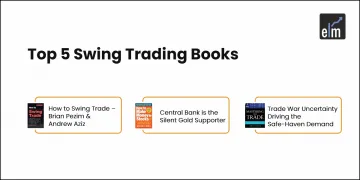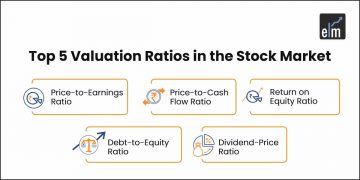Some people toss a coin and if heads come they buy the stock and if tails come they sell the stock. They take the stock market as a game of gamble. That is the biggest mistake they make while investing in stocks. For stock selection, you need to do a proper fundamental analysis of stocks.
The stock market is not a game of gamble. If they have proper knowledge about it, they will understand. We need to analyze the stock before we jump into investing it which can be done by analysts.
“ I’ve never bought a stock unless, in my view, it was on sale.” John Neff
Fundamental analysis of stocks is a technique of analyzing stocks for investing in stocks. Fundamental Analysis is usually done to find the intrinsic value of a stock.
The intrinsic value helps to find out whether the stock is overpriced or underpriced. If the intrinsic value is above the current market price then we can buy the stock as we believe that the stock price will rise. If the intrinsic value is below the current market price then we can sell the stock as the stock price is going to fall down.
| Table of Contents |
|---|
| Quantitative factors |
| Qualitative Factors | Bottomline |
We can do a fundamental analysis of stocks from the financial segment of the annual reports which includes the P/L Account, Balance Sheet, and Cash Flow Statement. Fundamental Analysis uses qualitative and quantitative analysis of stock selection. Quantitative factors include ratio analysis and value stock criteria for selecting the right stocks. It also involves studying the shareholding pattern and industry growth.
Quantitative factors:-
Growth rate :
For the stock selection while investing, calculating the growth rate is an important parameter for the Fundamental Analysis of stocks. The growth rate of revenues, dividends, earnings, and so on have to be calculated.
Compounded Annual Growth Rate (CAGR)–
It is used to measure the investment’s return on a particular performance of the company. The formula of CAGR is:-
CAGR = ( EV / BV)1 / n – 1
where:
EV = Investment’s ending value
BV = Investment’s beginning value
n = Number of periods (months, years, etc.)
Dividend Discount Model:
It is used when we want to select stock by looking at its dividend. The simplest way for valuing equity is the Dividend Discount Model.
Dividend Discount Model= (Dividend per share/(Discount Rate – Dividend growth rate))
We should always invest in a stock that grows every year with respect to its dividends, earnings, revenue, etc.
Cash flow:
While we select a stock for investing, we should look at how much cash a business is generating. We can find out this in the Cash Flow statement of a company. The cash flow statement includes operating cash flows, investing cash flows, and financing cash flows.
Learn Fundamental Analysis for Equity from Market Experts
If the operating cash flow is negative, then the company is at risk. We should avoid investing in the stock of such a company.
For example, Kingfisher Airlines had negative operating cash flows for years and it resulted in bankruptcy.
PE ratio:
Price Earnings Ratio is the ratio that is used to calculate the current market price with per-share earnings. It represents the value placed by the market on each rupee the market earns. The formula for PE is:-
The formula for Earnings per sale:-
P/E = Stock Price Per Share / Earnings Per Share
The formula for EPS(Earning Per Share):-
EPS=(Total Earning/Outstanding share)
Net profit after Tax shows what the company earned after all its expenses, charge-offs, depreciation and taxes have been subtracted.
No. Of shares outstanding is the No. Of shares owned by the public
A higher PE compared to the market indicates that the stock is expensive, whereas lower PE indicates that the stock is undervalued. We should buy the stock when it is undervalued.PE ratios of all stocks tend to be high in a bull market and tend to be low in a bear market.
Let us take an example: –
Company A has a PE of 52x
Company B has a PE OF 23x
This means that the stock of Company A is expensive, and the stock of Company B is cheaper than Company A. Then we should invest in Company A’s stock.
Also read: Nifty P/E Ratio – An Indicator of Stock Market Health
Debt/Equity ratio:
The debt Equity ratio is a leverage ratio. It is used for analyzing the extent of leverage used by the company and its ability to meet the obligations.
The formula for the Debt/Equity ratio is:-
Debt to Equity ratio= (Total Liabilities/Total shareholders equity)
Total Liabilities are the financial obligations owed by the company to individuals. Whereas shareholder’s equity is the share capital retained in the firm.
If the company takes too many debts, in the absence of meeting its obligations, the company may face bankruptcy. It would be prudent for investors to avoid companies with extremely high levels of debt. On a most conservative basis, a D/ E of 1 or less should be considered as the benchmark.
Let us take an example:-
A company with a DE ratio of 0.62 is better than a company with a DE ratio of 3.2. The second company has more chances of becoming bankrupt as compared to the first company. Therefore we will choose the company with a DE ratio of 0.62
Net profit Margin:
Net Profit margin is a profitability ratio. It is also known as EBITDA margin. This ratio is used to find the profitability of a firm which is based on operations and direct cost. The formula for net profit margin is:-
Net profit margin= (Net profit before tax/Sales)*100
Sales are the revenue earned by the company when it sells its goods and services Profit before tax (PBT) is a measure that looks at a company’s profits before the company has to pay corporate income tax.
Read more about – How to calculate intrinsic value
EBITDA margin should be higher as it indicates the company is efficient as compared to its peers. So when you choose a stock, look for a higher Net Profit Margin.
Promoters stakeholding:
Promoter shareholding is also an important criterion for the selection of stock. It is important to determine what the promoter shareholding pattern in a company is. Promoters have the best knowledge of the company as they are insiders. They know what is happening in the company.
If the promoter’s stake in the company increases, then we should buy the stock as it is a positive signal. It means that the Promoters are confident that the company will grow. If the promoter’s stake in the company reduces then we should sell the stock as it is a negative signal.
For example:
Before the Satyam scam, the holdings of Ramalinga Raju’s were decreasing continuously. He was an insider and he knew something wrong is going to happen with the company.
Learn from Market Experts : NSE Academy Certified Equity Research Analysis
Prefer dividend paying company:
If we want to invest in a stock for the long term, we should always choose a stock that pays dividends. The Dividend is a source of income for the investors. When a company earns profits, it shares a part of it to its shareholders as a dividend. Generally, companies maintain their dividend levels until something drastically different happens with the businesses.
Dividends are mentioned as a percentage, the percentage is reckoned with regard to the face value. For example, if a company with a Face value of Rs. 10 declares a 30% dividend, it means a dividend of Rs. 3 per share. However, if a company with a Face value of Rs. 2 declares a 30% dividend, it means a dividend of Rs. 0.60 per share.
We can measure how much dividend shareholder receives compared to the market value of the share. The formula is:-
Dividend yield=(Annual Dividend/Current Stock Price)
The current stock price is the market price of the stock
An annual Dividend is a dividend the company pays to its investors annually.
Investors should choose higher dividend yield stocks as it implies that the company is giving dividends to its investors and also dividends are tax-free.
Stock price & intrinsic value:
The main objective of the Fundamental Analysis of stocks is to find the intrinsic value of the stock while selecting a stock for investment. The intrinsic value helps to find out whether the stock is overpriced or under-priced. If the intrinsic value is above the current market price then we can buy the stock as we believe that the stock price will rise. If the intrinsic value is below the current market price then we can sell the stock as the stock price is going to fall down.
Qualitative factors:-
Competitive advantage:
While analyzing a company, it becomes imperative for investors to find points of differentiation for the business from others within the industry/sector. As a sector/industry goes through ups and downs, so do the players in that sector/industry, however, each company will have its unique ways of mitigating risks and maximizing returns. The differentiating points should include brands, long track record, clean ethical management, takeovers and buyouts, and large market share while we select the stock.
We can also do a Strengths, Weakness, Opportunities, and Threat (SWOT) analysis of the company in which we are planning to invest. Strengths and Weaknesses are internal to the business while Weaknesses and Opportunities are external. SWOT analysis gives the investors a short but comprehensive idea about the business of the company.
Industry growth:
While we select a stock for investing, we should also see how the sector is performing. If the industry is growing, then the companies will also perform in that industry. If the growth of the industry is stagnant, then the companies in it will not able to perform well.
Industry analysis can be done through:-
- Michael Porter’s Five Force Model– As the name suggests, this model analyses any industry on the basis of five broad parameters or forces. These 5 forces are divided into 2 vertical and 3 horizontal ones. The horizontal forces include threat of substitutes, threat of new entrants and threat of established rivals. While the vertical forces include bargaining power of buyers and bargaining power of sellers.
Also read : Michael Porter’s Five Force Model
- SCP Analysis: Another method of analyzing industries is to look at the industry structure (monopoly, oligopoly), its conduct (commoditized or specialized, seasonal or around the year, cyclical or non-cyclicality.) and finally its performance (RoE, RoIC, WACC, etc.). Structure, Conduct, Performance (SCP) analysis approaches the industry evaluation exactly with this categorization.
Bottomline:
There are a few ratios that we have discussed here. There are many more ratios that we should look for, while we do the stock selection for investing. We cannot become experts in ratio analysis in one day. We need to practice in order to become experts in the fundamental analysis of stocks. Along with the fundamental analysis, we should always do technical analysis. If we are busy with our work then we do not have time to do fundamental and technical analysis, then we should give this work to asset management companies that have a professional team of fundamental and technical analysts.
In order to get the latest updates on Financial Markets visit our website https://stockedge.com/







Thanks for sharing – fundamental way to selecting s stocks its really helpful for buyer.
Welcome!!
Dear sir/madam , Am 26 year old working as mechanical engineer..and am very intrestef to lead my career as good investor, trader also bussiness mind.. but am looking for real guidance.. am checking the markets from last 5 years (21yewra age).. and I lost 50000 in 2013… now I decided to take steps to share markets… if anyone can you please guide me . And I don’t want tips to invest on particular shares … I need basics logics and views.. am kindly requesting plz guide me..
Hi Srinubaba,
You can join our Certification in Online Research, Trading & Advisory course. Here you can learn from the basics about the shares market.
Happy Reading!
Heya i am for the first time here. I found this board and I to find It truly
helpful & it helped me out a lot. I’m hoping to offer one thing again and aid others such as you
helped me.
This article is in detail, thanks for sharing.
Hi,
Thank you for Reading!
Keep Reading